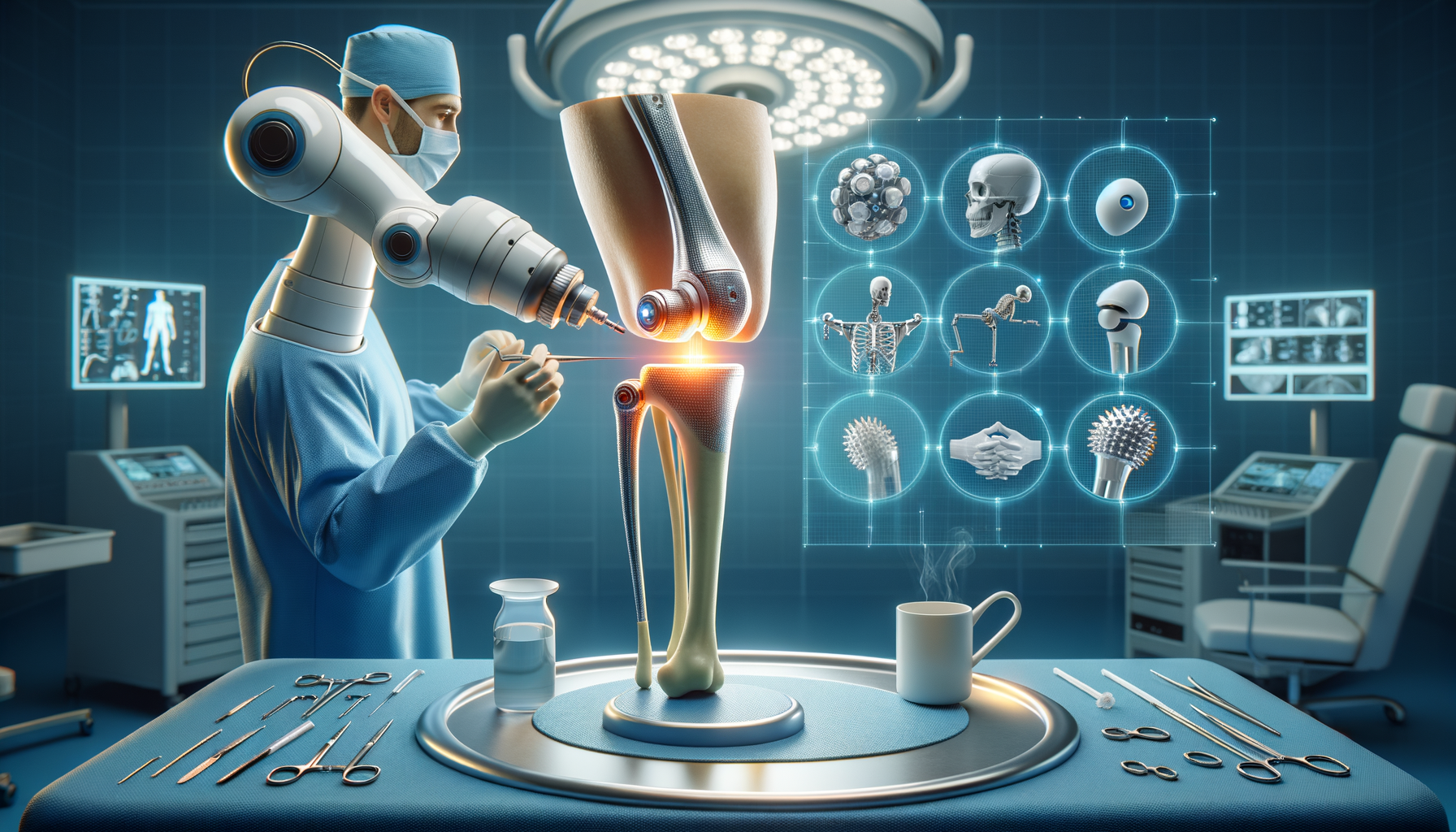Introduction to Robotic Knee Replacement Surgery
In the evolving landscape of medical technology, robotic knee replacement surgery stands out as a remarkable advancement. This innovative procedure leverages cutting-edge robotics to enhance precision and outcomes in knee joint replacements. As more individuals seek solutions for chronic knee pain and mobility issues, understanding how robotic-assisted surgery works becomes increasingly relevant. This article delves into the intricacies of this modern surgical approach, comparing it with traditional methods and outlining the recovery expectations for patients.
How Robotic Knee Replacement Surgery Works
Robotic knee replacement surgery introduces a new dimension to orthopedic procedures by integrating robotic systems into the surgical process. The procedure begins with a detailed preoperative plan, where a 3D model of the patient’s knee is created using advanced imaging technology. This model allows surgeons to plan the surgery with exceptional precision, tailoring it to the patient’s unique anatomy.
During the surgery, the robotic system assists the surgeon by providing real-time data and guidance. The robot is equipped with sensors that ensure the surgical instruments are positioned with utmost accuracy, minimizing the risk of human error. This level of precision is particularly beneficial in aligning the knee implant, which is crucial for the long-term success of the surgery.
Key features of robotic knee surgery include:
- Enhanced precision in implant placement
- Reduced risk of complications
- Customization based on patient-specific anatomy
This approach not only improves the surgical outcome but also contributes to a smoother recovery process, making it a compelling option for patients seeking knee replacement.
Benefits of Robotic-Assisted Procedures vs. Traditional Methods
When comparing robotic-assisted procedures to traditional knee replacement methods, several advantages become apparent. The precision offered by robotic systems translates into numerous benefits for patients.
Firstly, robotic-assisted surgery often results in less trauma to the surrounding tissues. This is because the robotic system allows for smaller incisions and more accurate movements, reducing the impact on healthy tissue. Consequently, patients experience less postoperative pain and a quicker recovery.
Secondly, the accuracy in implant placement reduces the risk of misalignment, which is a common issue with traditional methods. Proper alignment is crucial for the longevity of the implant and the overall functionality of the knee.
Lastly, robotic systems provide consistent results across different patients. This consistency is due to the technology’s ability to assist surgeons in replicating the same level of precision in every procedure. As a result, patients can expect reliable outcomes and improved knee function.
In summary, robotic-assisted knee replacement offers:
- Minimized tissue trauma
- Improved implant alignment
- Consistent and reliable outcomes
These benefits make robotic surgery an attractive choice for both surgeons and patients.
Recovery Expectations After Robotic Knee Implants
Recovery from robotic knee replacement surgery is typically more rapid and less painful compared to traditional methods. This expedited recovery is largely due to the minimally invasive nature of the procedure and the precise placement of the implant.
Patients can expect to begin physical therapy shortly after the surgery, often within a day or two. Early mobilization is encouraged to promote healing and regain strength in the knee. The precision of the robotic procedure also means that patients may experience less swelling and discomfort, allowing them to engage more fully in rehabilitation exercises.
Most patients can return to their normal activities within a few weeks, although this varies depending on individual circumstances and adherence to rehabilitation protocols. It’s important for patients to follow their surgeon’s guidelines and attend all follow-up appointments to ensure a successful recovery.
Key aspects of recovery include:
- Early initiation of physical therapy
- Reduced pain and swelling
- Gradual return to normal activities
Overall, robotic knee replacement surgery offers a promising recovery trajectory, enabling patients to resume their active lifestyles sooner.
Conclusion: Embracing the Future of Knee Surgery
Robotic knee replacement surgery represents a significant leap forward in the field of orthopedics. By combining advanced technology with surgical expertise, this approach offers enhanced precision, reduced recovery times, and improved patient outcomes. As more individuals seek effective solutions for knee pain and mobility issues, robotic-assisted procedures are likely to become the standard of care.
For patients considering knee replacement, understanding the benefits and expectations of robotic surgery can help make informed decisions about their healthcare journey. With its ability to transform the surgical experience, robotic knee replacement is indeed a step toward a healthier, more active future.




Leave a Reply